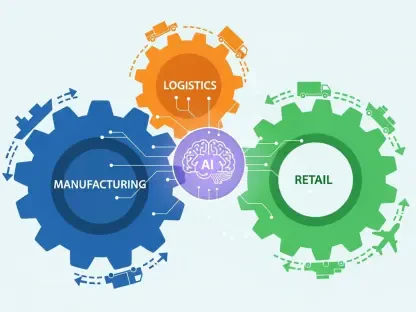As artificial intelligence continues to reshape the landscape of modern business, companies are confronted with a host of ethical and legal challenges that transcend mere technical implementation, sparking critical questions about fairness, transparency, and accountability. The integration of AI into daily operations also poses risks to reputation and regulatory compliance. Businesses that fail to address these concerns may face significant setbacks, whereas those that prioritize ethical AI deployment can secure lasting competitive advantages. The intersection of AI capabilities and business ethics presents a complex terrain that demands careful navigation. Issues such as data privacy, bias in decision-making, and the societal impact of automation are no longer optional considerations but essential components of responsible corporate strategy. This discussion aims to provide actionable insights and practical steps for organizations striving to harness AI’s potential while upholding ethical standards and mitigating legal risks in an increasingly scrutinized digital environment.
1. Understanding the Ethical Impact of AI in Business
The rapid adoption of AI technologies in business processes has fundamentally altered the ethical landscape, requiring companies to evaluate how automated decisions influence employees, customers, and society at large. Key concerns include ensuring fairness in AI-driven outcomes, maintaining transparency about the use of such systems, and respecting human autonomy by offering meaningful oversight and choice. Additionally, the broader societal implications, such as impacts on employment and social equity, must be carefully considered. These elements are not just technical challenges but moral imperatives that shape public perception and trust. Ignoring these factors can lead to unintended consequences, including perpetuating systemic biases or eroding stakeholder confidence. Businesses must adopt a proactive stance, recognizing that ethical considerations are integral to long-term success. This means going beyond surface-level compliance to embed ethical principles into the core of AI strategies, ensuring that technology serves as a force for good rather than a source of harm.
Moreover, establishing ethical AI practices is not merely about avoiding negative outcomes; it also offers a pathway to build trust and attract top talent. Companies that demonstrate a commitment to responsible AI can differentiate themselves in a competitive market, reducing regulatory risks and fostering loyalty among stakeholders. This requires the development of comprehensive guidelines that surpass legal mandates and integrate ethics into every stage of AI development and deployment. Regular audits of AI systems for bias and unintended consequences are essential, as is creating safe channels for stakeholders to voice concerns without fear of retaliation. Forming an AI ethics committee with diverse perspectives, including external advisors, can provide valuable independent input and ensure accountability. Leadership must also define clear escalation processes for ethical dilemmas, reinforcing that responsibility for AI outcomes rests at the highest levels. Ultimately, the goal is to promote positive impacts for all involved, aligning technological innovation with societal well-being.
2. Safeguarding Intellectual Property in the AI Era
The rise of generative AI has introduced intricate challenges in the realm of intellectual property, particularly regarding the copyright status of AI-generated content. In the U.S., works produced solely by AI are not eligible for copyright protection, though content created through a mix of human and machine input can be protected. This varies globally, with some regions recognizing AI-generated works under certain conditions while others remain undecided. Businesses must ensure that human creativity plays a significant role in any public-facing content to secure IP rights. Staying informed about evolving international stances on AI and IP is also critical, as discrepancies in legal frameworks can impact global operations. Companies should prioritize clear documentation of human contributions to avoid disputes over ownership. By understanding these limitations and incorporating human oversight, organizations can better navigate the complex legal landscape surrounding AI-generated intellectual property.
Beyond copyright, the use of training data for AI models presents another layer of legal uncertainty, as debates over fair use continue to unfold. Developers often argue that using copyrighted material for training purposes falls under fair use, while copyright holders frequently contest this view. To minimize risk, businesses should consider obtaining licenses for training data or relying on public domain and factual content whenever possible. Keeping abreast of emerging case law is vital, as legal precedents could shift rapidly. End users of AI tools also face potential liability if outputs infringe on existing copyrights, making it prudent to opt for enterprise AI solutions that offer warranties and indemnification. Avoiding prompts that replicate specific copyrighted material and focusing on general summaries can further reduce exposure. By adopting these cautious approaches, companies can mitigate IP-related risks while leveraging AI’s creative potential in a legally sound manner.
3. Securing Trade Secrets and Preventing Data Exposure
AI tools, while powerful, introduce significant risks to the protection of trade secrets, particularly when employees inadvertently input confidential information into public platforms. Such data could be stored, analyzed, or used for further model training, posing a threat to proprietary information. Recent incidents of engineers exposing sensitive source code through public AI tools highlight the severity of these risks. To counter this, businesses should exclusively use closed, enterprise-grade AI systems for handling proprietary data, ensuring robust data isolation and security measures are in place. Policies must explicitly prohibit the upload of trade secrets or sensitive personal information to public AI platforms, and technical controls should be implemented to prevent unauthorized sharing. Regular reminders to staff about the potential for indefinite storage of AI interactions and access by third parties or through breaches are also essential to maintain vigilance.
Additionally, companies should develop clear classification systems for information sensitivity, tailoring AI tool permissions accordingly. Highly confidential data should be processed only through on-premises or private cloud AI systems with stringent security protocols. Information of moderate sensitivity might be suitable for enterprise cloud AI tools, provided contractual safeguards are in place. Publicly available data can be handled by consumer AI tools, though output quality and consistency still require monitoring. Educating employees on these classifications and the associated risks ensures a culture of caution and accountability. By implementing these layered protections, businesses can minimize the chances of trade secret exposure while still benefiting from AI capabilities. This structured approach not only safeguards critical assets but also reinforces a commitment to data security as a cornerstone of ethical AI use, aligning operational practices with broader organizational values.
4. Addressing Bias and Ensuring Fairness in AI Systems
One of the most pressing ethical challenges in AI deployment is the risk of perpetuating or amplifying societal biases embedded in training data, which can lead to discriminatory outcomes in areas like hiring, lending, and insurance. To address this, businesses must scrutinize training datasets for representational imbalances and historical biases that could skew results. Implementing rigorous testing protocols to detect disparate impacts across protected groups is critical, as is documenting all efforts to identify and mitigate bias. Such documentation serves not only as a record of due diligence but also as a potential defense in regulatory or legal contexts. Proactive measures to address bias early in the AI lifecycle can prevent costly corrections down the line and demonstrate a commitment to equitable outcomes. This process requires continuous attention, as biases can emerge or evolve even after initial deployment.
Beyond data analysis, establishing clear fairness metrics tailored to specific use cases is essential for monitoring AI performance over time. Different definitions of fairness, such as equality of outcomes versus equality of opportunity, may conflict, necessitating deliberate choices and transparent reasoning. Involving diverse teams in AI development and review processes helps uncover potential blind spots that might otherwise go unnoticed. For high-stakes applications that impact individuals’ rights or opportunities, engaging external auditors can provide an additional layer of scrutiny and credibility. These steps collectively ensure that AI systems are not only technically sound but also aligned with ethical principles of fairness. By prioritizing these practices, businesses can reduce the risk of harm and build systems that contribute to a more just application of technology across various sectors.
5. Upholding Privacy and Data Protection Standards
AI systems often rely on vast datasets for training and operation, raising significant concerns about privacy and data protection under existing and emerging laws. Adhering to data minimization principles—using only the data necessary for specific purposes—is a fundamental step in maintaining compliance and safeguarding individual rights. Transparent notifications in privacy policies and at data collection points must clearly explain how AI is used, its impact on individuals, and the rights they hold. Offering meaningful opt-out options for non-essential AI applications further respects user autonomy. Strong security measures must be implemented across the entire AI pipeline, from data collection through model training to output generation, to protect personal information from breaches or misuse. Preparing for data subject rights requests, such as access, correction, deletion, or explanations of AI decisions, is also a critical component of responsible data handling.
Furthermore, businesses must anticipate evolving regulatory expectations by staying informed about new AI-specific privacy requirements. Regular reviews of data practices ensure alignment with legal standards and help identify potential vulnerabilities before they become issues. Collaboration between legal, technical, and ethical teams can facilitate a holistic approach to privacy, balancing innovation with compliance. Educating employees about the importance of data protection in AI contexts reinforces a culture of responsibility, reducing the likelihood of accidental non-compliance. By embedding these practices into operational frameworks, companies can mitigate privacy risks while maintaining public trust. This not only protects individuals’ rights but also positions organizations as leaders in ethical data stewardship, an increasingly important factor in competitive markets where consumer confidence plays a pivotal role.
6. Fostering a Culture of Ethical AI Practices
Building a culture of ethical AI use within an organization goes beyond implementing policies; it requires active leadership commitment to model responsible behavior and prioritize ethics alongside business objectives. Leaders must visibly champion ethical considerations, integrating them into strategic discussions rather than treating them as secondary to profit or efficiency goals. Recognizing and celebrating employees who raise ethical concerns or opt for principled solutions over expedient ones can reinforce the importance of integrity. Such recognition sends a clear message that ethical decision-making is valued and supported at all levels. This approach helps embed ethics into the organizational fabric, ensuring that AI deployment aligns with broader values of fairness and accountability. Over time, these efforts cultivate an environment where ethical considerations are a natural part of innovation.
Additionally, making ethics a regular topic in AI-related conversations prevents it from becoming a mere compliance checkbox. Regular training sessions and open forums can facilitate dialogue about ethical challenges and solutions, encouraging employees to think critically about the implications of their work. Cross-departmental collaboration ensures that diverse perspectives inform AI strategies, reducing the risk of overlooking critical issues. By fostering an environment where ethical AI use is a shared responsibility, businesses can better navigate complex dilemmas and adapt to changing societal expectations. This cultural shift not only mitigates risks but also enhances the organization’s reputation as a trustworthy steward of technology. Ultimately, a strong ethical foundation enables companies to leverage AI’s benefits while maintaining alignment with principles that resonate with stakeholders and the wider community.
7. Moving Forward with Responsible AI Strategies
Reflecting on the journey of integrating AI into business operations, it becomes evident that ethical considerations play a pivotal role in shaping outcomes, with companies tackling challenges related to fairness, privacy, and intellectual property often emerging as leaders in their fields. Those efforts to establish robust ethical guidelines and foster a culture of accountability pay dividends in terms of stakeholder trust and regulatory compliance. Audits for bias and transparent communication channels prove instrumental in identifying and addressing potential issues before they escalate. The commitment to protecting trade secrets and ensuring data privacy through secure systems is a cornerstone of maintaining competitive integrity. Looking back, the deliberate steps taken to involve diverse teams and external auditors in high-stakes AI applications underscore a dedication to equitable technology deployment.
As businesses move forward, the focus should shift toward refining these practices through continuous evaluation of AI tools and vendor contracts to safeguard organizational interests. Prioritizing partnerships with providers that align with ethical standards can further strengthen responsible deployment. Investing in ongoing employee education about emerging risks and ethical dilemmas will ensure sustained vigilance. Exploring innovative fairness metrics and privacy solutions can position companies at the forefront of industry advancements. By sharing best practices and lessons learned, organizations can contribute to a collective understanding of responsible AI, paving the way for a future where technology serves as a catalyst for positive change. These actionable steps offer a roadmap for balancing innovation with integrity, ensuring that AI’s transformative power is harnessed in a manner that benefits all stakeholders.









